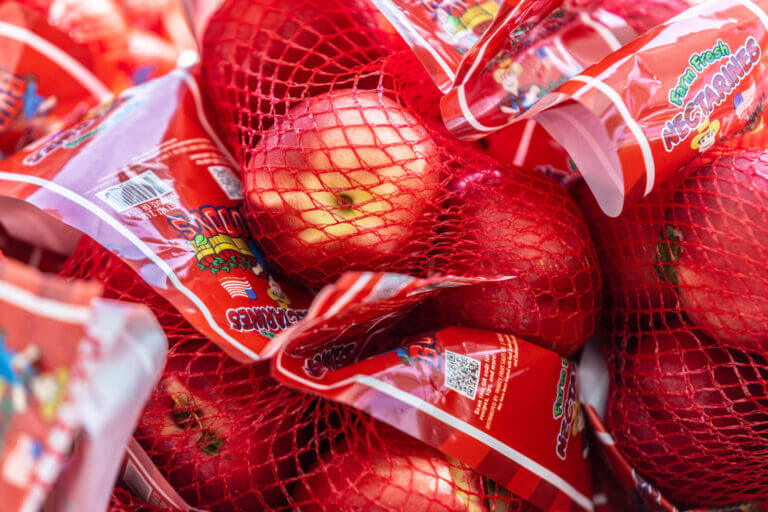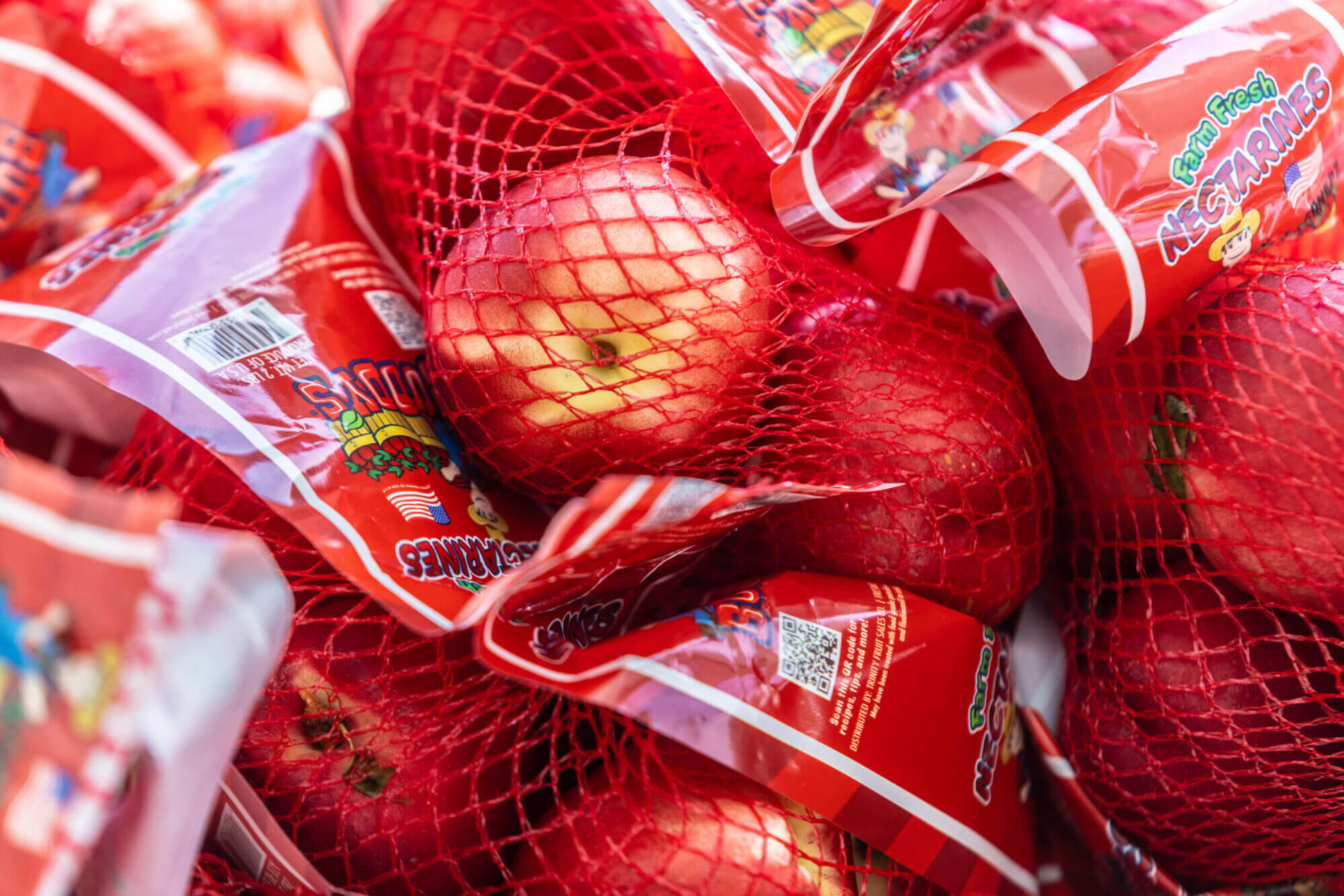

Cindy Hudnall runs Saints’ Brew Soup Kitchen in Tupelo where she serves hot breakfasts to close to 100 people every weekday – working parents, the elderly, the homeless, veterans and even young adults aging out of the foster care system.
There’s always been a need for people to find enough food to eat in Mississippi, one of the nation’s poorest and most food insecure states. But lately, things are different. Federal money that funded the Supplemental Nutrition Assistance Program (SNAP) has dried up due to the government shutdown – so far the second longest in history – and big changes to the program coming down the pipeline are leaving people desperate and scrambling.
“You can hear it in their voice, you can see it in their face – they are scared,” Hudnall said. “And there’s no magic solution in the foreseeable future. When you get large groups of people who are worried about their livelihoods, you cannot have a thriving community.”
President Donald Trump opted not to tap into emergency funds to continue running the nation’s largest anti-hunger program, according to a memo from the U.S. Department of Agriculture, obtained by Politico. While officials in at least three states have pledged to keep the program going in the absence of federal funds, the Mississippi Department of Human Services announced Friday that its SNAP program had been paused.
“No new SNAP benefits will be issued for November unless federal guidance changes, however, previous benefits will remain accessible,” the department said in a press release Friday.
That decision promises to leave nearly 400,000 Mississippians without food security, according to the Center on Budget and Policy Priorities. But it also undermines people’s confidence in elected officials, explained Gina Plata-Nino, interim director of SNAP at the Food Research and Action Center, a national nonprofit working to end poverty-related hunger.
“Allowing hunger to deepen during a shutdown is a choice,” Plata-Nino said. “The Secretary of Agriculture has the authority and the responsibility to act now to ensure no one goes hungry because of political gridlock. Further delay in using available funds only weakens public faith in government.”
Nonprofits are having to pick up the slack, which is not sustainable long term, said Jason Martin, executive director of the Northeast Mississippi Hunger Coalition, a network of 24 food pantries across eight counties.
“I just got off the phone a little bit ago with a woman whose SNAP benefits are not coming through and can’t survive and is requesting emergency boxes,” Martin said. “From the pantries’ perspective, we’re expecting to be overwhelmed with the request for services. And our system is already taxed to the max.”
Food banks have been under enormous pressure since the U.S. Department of Agriculture cut $500 million to their funding in March. The loss of federal funding to food banks coupled with the increasing need is forcing nonprofits to constantly pivot in an effort to fill impossible gaps, Martin said.
“On a personal note, I just wish that our politicians and legislators would stop politicizing human issues with people who are in a poverty-stricken situation already,” said Martin, who made it clear those were his personal beliefs and not those of his organization.
While the government shutdown will eventually end and SNAP benefits will resume, they won’t look like they used to.
How Trump’s megabill will affect Mississippians who rely on food aid
As a result of a historic tax and spending package President Donald Trump signed into law over the summer, the SNAP program will be transformed in two ways. First, enrollees will face immediate new paperwork and eligibility requirements. Cost shifts will also force states to make tough choices about cutting eligibility or benefits further. Altogether, the so-called One Big Beautiful Bill Act includes the largest cuts to social safety net programs like Medicaid and SNAP.
Mississippians who don’t meet new work requirements could get kicked off SNAP as early as next month, while the state will have to come up with an additional $140 million to keep the program going, according to analysis from the Center on Poverty and Inequality at Georgetown Law School
For the first time ever, states will be forced to cover a portion of the costs for food aid benefits, shifting billions in costs to state budgets. Mississippi, like many other states, will likely have to cut enrollees or benefits or withdraw from the state-federal program altogether. Poverty will increase, local economies will struggle, and food banks will face mounting strain, experts say. As the poorest state in the nation, Mississippi could stand to lose the most.
“This is one of the most significant impacts on Mississippi’s budget,” said Theresa Lau, senior policy counsel at the Southern Poverty Law Center, to a group of lawmakers during a hearing on the federal budget law in September.
For a number of reasons, states are not equipped to handle this shift, explained Elaine Waxman, a senior fellow in the Tax and Income Supports Division at the Urban Institute. The poorest states, that need social safety net programs the most, will be at the biggest disadvantage, she said.
“Unlike the federal government, states typically cannot deficit spend,” Waxman said. “They have to balance their budgets. And they also have a lot fewer revenue sources – they don’t have access to the federal income tax, for example. Especially a state like Mississippi, which has a historically high poverty rate, there’s just less resources to draw out of the population.”
The most likely scenario is that states that can’t afford their new share of the program’s cost will have to make eligibility changes to cover fewer enrollees. Another option would be to reduce the monetary benefits enrollees get – though Waxman said states would likely need to get waivers, specific authorization from the federal government that allows states flexibility in administering the state-federal program, to do so.
Both of those options would put an undue burden on food banks and coalitions like the one Martin runs in northeast Mississippi. His small non-profit network must now find new donors and more grants to meet needs that the government once supported.
“As a nonprofit organization we’ll have to figure out how to sustain that level of funding so we can sustain that level of service,” Martin said. “We don’t have a bunch of staff – I’m the staff person.”
The last option would make food aid a thing of the past.
“The most drastic scenario would be that a state would be unable to support the program and would withdraw,” Waxman said. “And that’s a catastrophic option, but I’ve definitely heard states say that they can’t rule it out because this is a pretty significant escalation in their budget responsibilities and they don’t have a clear path as to how they’re going to meet it.”
“It’s never a simple ‘just do this’ resolution”
Costs to states are expected to increase dramatically in the months ahead. Each state’s share of administrative costs for implementing the program will rise from 50% to 75%. Then, states will be responsible for paying up to 15% of the cost of the actual food benefits – something the federal government used to cover completely.
How much a state has to pay in benefit costs will depend on its error rates. That rate measures how accurately each state determines if a person is eligible to receive benefits, including SNAP. The Trump administration and Congress enacted this provision to crack down on alleged fraud and abuse. But that has been proven to be rare in the SNAP program, which has one of the most rigorous systems to determine eligibility and payment accuracy among safety net programs, according to the Center for Budget and Policy Priorities.
Errors more often come down to overburdened systems and the fluctuation in poor people’s income, Waxman said.
“It’s often literally just administrative errors, or someone forgot to submit something, or someone’s income was fluctuating frequently and that made it difficult to calculate the correct benefits. It’s not driven by fraud – that’s a very small issue relatively in SNAP.”
Mississippi, a state with an error rate over 10%, would be required to pay the maximum 15% share of benefit costs, explained Lau, from the Southern Poverty Law Center.
Shifting costs to states isn’t the only change to SNAP that the federal budget bill imposes. New work requirements will mean that enrollees have to prove they are working, going to school or training at least 80 hours a month, or that they qualify for one of the exemptions.
The law increases the upper age limit on the work requirements from 54 to 65-years-old and extends the requirement to those previously exempt: veterans, those facing homelessness, and youth aging out of foster care. Caregivers remain exempt, but parents must have children under the age of 14 – down from 18.
The coverage losses will have a profound impact on local economies, including grocers and retailers in rural areas who stay afloat from the business SNAP recipients bring, explained Plata-Nino, from the Food Research and Action Center.
“What happens when the SNAP retailer can no longer receive the funds for whatever reason?” asked Plata-Nino. “He still has to pay the rent, there’s no money for rent. He still has to pay salaries, there’s no money for salaries. So, there go the wages, there go the income and federal taxes they would pay, and there go the local taxes. It really is such an ecosystem.”
Research shows that hunger has serious consequences on health and education outcomes. Since children who are enrolled in SNAP or Medicaid are automatically enrolled in free school lunch, the downstream effects of changes to these programs will result in fewer children automatically enrolled in free school-based meal programs. For many children, these meals are the only ones they are guaranteed each school day.
With constant uncertainty and an increasingly frayed safety net, advocates worry people’s desperation will force them toward options that perpetuate poverty. Charity Bruce Sweet, who leads the Economic Justice Campaign at the Mississippi Center for Justice, said she has seen people get buried under debt after taking out small loans to cover bills or groceries – and worries that will become more common.
Payday loans, which often accept bad credit and offer same-day funds, typically have exorbitant interest rates that perpetuate poverty. Mississippi has no protections against payday loans and one of the highest average interest rates for them, Bruce Sweet said. Mississippi’s average payday loan interest rate in 2023 was 572%, according to the Center for Responsible Lending.
“People eventually default on those loans, and they end up in the court system and these attorneys are coming in asking for the loans, plus the interest, plus the late fees, plus the court fees,” said Bruce Sweet. “And it literally will put you in another level of poverty you haven’t even thought of before.”
While it might be easy to judge people or assume solutions, Hudnall, of Saints’ Brew Soup Kitchen, said that working on the ground has opened her eyes to just how many layers are at play when it comes to poverty.
“It’s never a simple ‘just do this’ resolution,” Hudnall said. “Getting to know people at an individual level will change your perspective about life. You do not know the real story until you ask open-ended questions and get to know people – their background, where they came from, what life was like for them growing up, what scares them and what motivates them.”
- Bluesky social media app restores access for adult Mississippians - December 10, 2025
- Senate study group vets ideas for how lawmakers should act on health of women, children and families - December 10, 2025
- Send us news tips on I.C.E. in Mississippi - December 10, 2025